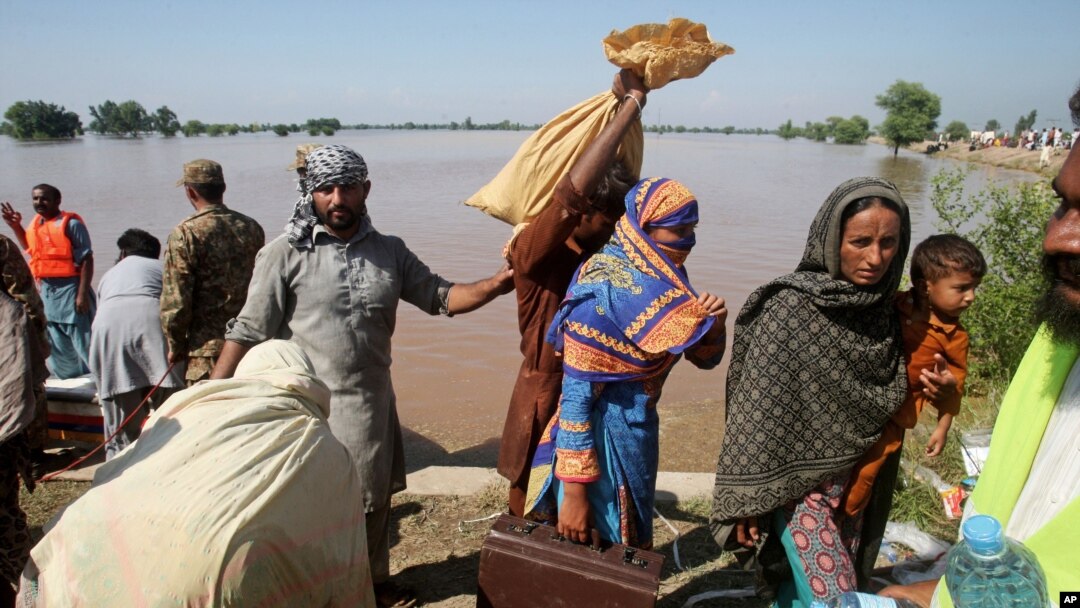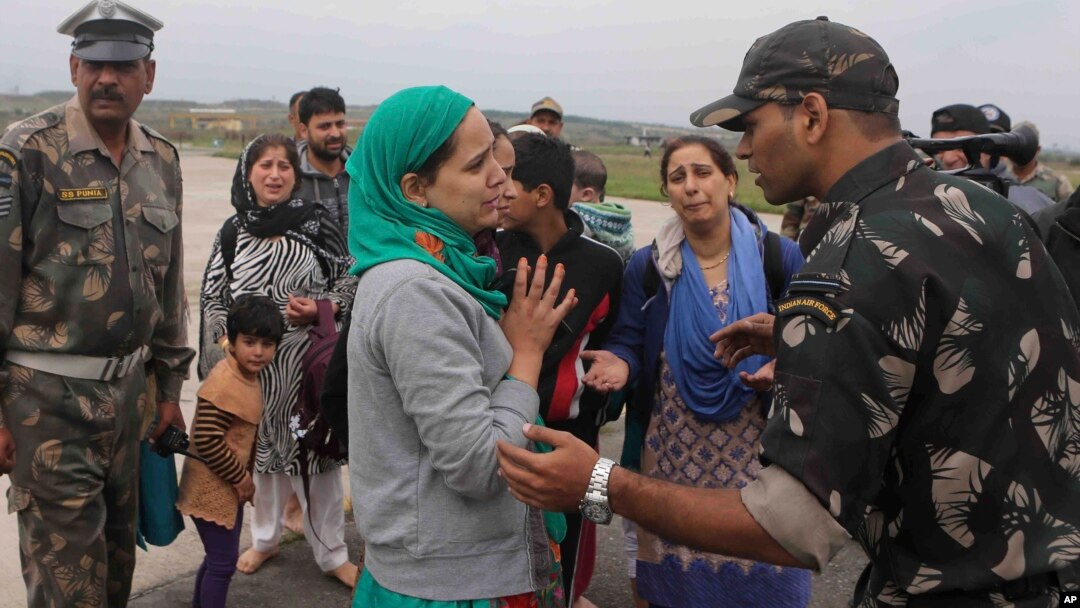Rescue operations are being scaled up in Indian Kashmir as the region’s main city faces flooding. The flash floods that have claimed at least 300 lives in India and Pakistan are the worst in half a century in the Himalayan region.
After wrecking havoc in hundreds of villages, swirling waters from rising rivers spread across Indian Kashmir’s summer capital Srinagar, submerging homes, hospitals, army bases, the administrative headquarters and the high court building.
As many parts of the city of 900,000 people began to resemble a lake, it became the focal point of rescue operations on Monday. Air force helicopters plucked people off rooftops, naval marine commandoes have joined the operation and Boats are being brought in from Delhi to assist in the evacuation.
But the task is not easy in a region tucked in the high mountains. The situation has worsened as telecommunication lines have snapped.
O.P. Singh is Director of the National Disaster Response Force. “We are not being able to establish communication with our teams who are operating there, and second in some of the areas the water level is so high that we are not able to reach there, unless we are airlifting. So these are two big challenges,” said Singh.
Thousands of soldiers have joined rescue efforts in a region where the army has a heavy presence. More than 20,000 people have been rescued, and as food stocks and medical supplies run low, helicopters are dropping food supplies.
The exact scale of the disaster will only unfold when communication lines and road links are reestablished. Many remote villages are cut off.
But meteorologists said the weather would soon improve, with monsoon rains letting up.
Home Minister Rajnath Singh said relief efforts have been strengthened.
He said a number of supplies have been sent via plane, including tents and blankets. He praised the job being done by soldiers and the paramilitary in the rescue operations.
The disaster in the Himalayas has also provided an opportunity for arch rivals India and Pakistan to reach out to each other. In a letter to his Pakistan counterpart, Indian Prime Minister Narendra Modi offered to assist Pakistan, which is also coping with the aftermath of flooding. Pakistan’s foreign ministry has reciprocated by offering to help India’s relief efforts in Kashmir, which lies at the heart of their dispute.

Pakistani villagers, who have been effected by the flood, arrive to find safe shelters in Pindi Bhatian, 105 kilometers (65 miles) northeast of Lahore, Pakistan, Sept. 8, 2014.
Many worry that the devastation left behind by the floods will take a huge toll on Kashmir’s economy, which relies heavily on tourism. But the region may see few visitors this winter.
Y.V. Sharma, the head of the Jammu and Kashmir Joint Chamber of Commerce and Industry, said it would take time to repair damaged infrastructure.
“Few places, bridges have broken and connectivity has been very much affected and to restore that connectivity will take some time, even major bridges, have been affected very badly,” said Sharma.
The floods hit Kashmir weeks after a booming tourist season this summer had raised high hopes among locals of more jobs and better times in the months to come.
South Asia Floods


